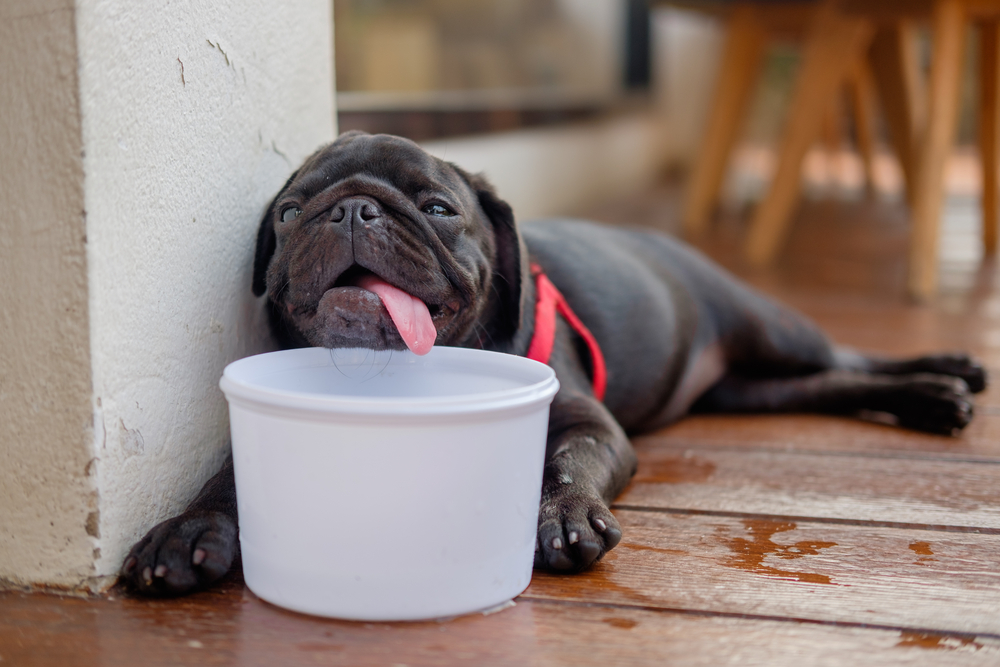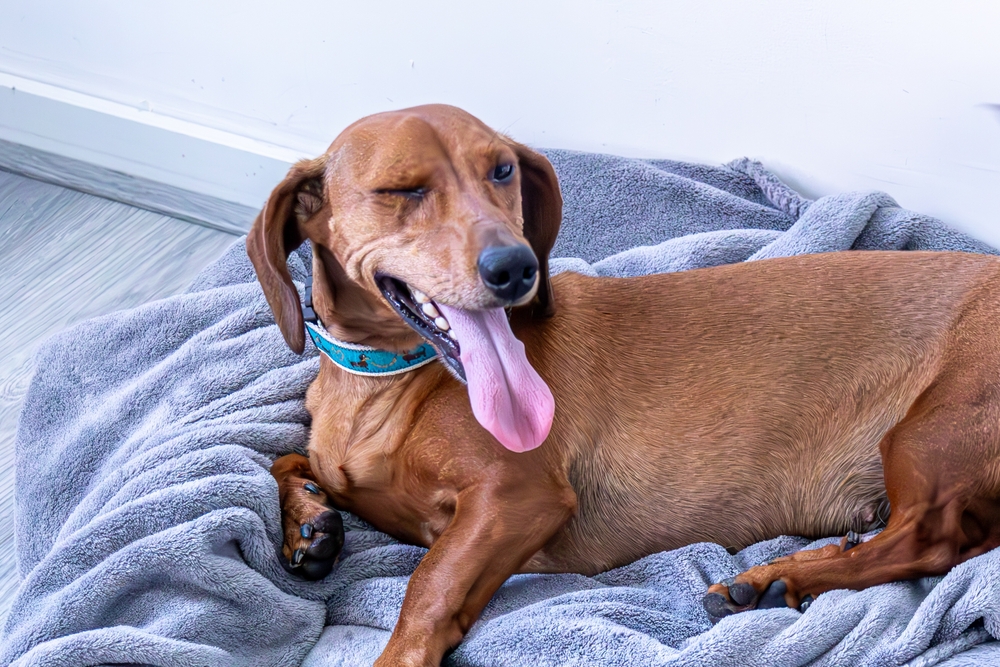Every dog owner has experienced their canine friend panting gusts of hot wind in their face. Panting is a normal behavior that typically occurs after exercise or conveys excitement. However, dogs sometimes pant to communicate fear or anxiety, or for more concerning reasons, such as when they are in pain or have an underlying medical issue. Our Lytle Veterinary Clinic team explains the different reasons dogs pant, and how to recognize when your dog’s panting is abnormal.
Dogs pant to cool down
The most common and well-known reason dogs pant is to cool themselves down. When your dog pants, they rapidly move air through their nose and mouth, which causes evaporation of moisture on the tissue surface. Evaporation is an efficient method of cooling. Brachycephalic (i.e., short-nosed) breeds such as pugs and French bulldogs struggle to efficiently cool themselves because they have shortened nasal passages.
Dogs pant during exercise
You may notice that your dog pants when they run around the backyard or catch a case of the zoomies in the house. Large muscle movements required for athletic activity require much more oxygen than lounging on the couch, and your dog will pant to bring more oxygen into their lungs. An elevated heart rate will increase bloodflow through your dog’s lungs, where the blood will pick up oxygen and then deliver it to the muscles.
Dogs pant to convey emotions
Dogs convey emotions through body language and specific behaviors, including panting. Your dog’s panting may indicate emotions such as excitement, fear, or anxiety. With one behavior indicating so many differnt emotions, it can be difficult to know what your dog is trying to tell you. Ways you can interpret your dog’s behavior include:
- Excitement — If your dog pants when anticipating an activity they enjoy, such as when you get home from work, it’s time to be fed, or they’re about to go on a walk, they are likely excited.
- Anxiety and stress — If your dog pants when they’re placed in a potentially stressful situation, such as when they are left alone or around another dog, they may be anxious. Identifying what causes panting in your dog can help you understand their anxiety triggers so you can use positive reinforcement to help them become more comfortable in non-threatening situations.
- Fear — If your dog pants in response to loud noises, car rides, or other situations that commonly evoke fear in dogs, they may be scared. Look for other signs of fear, such as a hunched posture, flattened ears, and trembling.
Panting is a normal way for your dog to communicate, but if their panting indicates stress or fear, you should identify the source of their discomfort and remove them from the situation when possible. You can work with your dog to help them become more comfortable in stressful situations, and you can use panting, other behaviors, and body language as a barometer of their progress.
Dogs may pant when they have a health issue

If you notice your dog panting when they seem relaxed, their panting could indicate an underlying medical condition that should be addressed. Health issues that may cause panting include:
- Heatstroke — If your dog is panting excessively on a hot day or in a hot environment, they may be experiencing heatstroke. Heatstroke occurs when a dog’s body temperature rises to a dangerous level. Along with excessive panting, additional signs of heatstroke include excessive drooling, lethargy, disorientation, vomiting, seizures, and collapse. If you think your dog may be experiencing heatstroke, move them to an air-conditioned area immediately and wet them down with cool water. If they don’t improve quickly, rush them to the nearest veterinary clinic for emergency care.
- Respiratory problems — Respiratory problems, such as respiratory infections and heartworm disease, can cause dogs to struggle to breathe efficiently. Additionally, brachycephalic breeds may pant due to their narrow airways.
- Heart disease — Congestive heart failure (CHF) can develop when a dog’s heart is unable to pump blood properly. CHF causes fluid to accumulate in the lungs, which interferes with breathing and can cause panting.
- Hormonal imbalances — Some hormone-related conditions, such as Cushing’s disease and hypothyroidism, can cause panting. These illnesses typically cause other symptoms, such as weight gain, lethargy, and hair loss.
- Pain or discomfort — Dogs may take frequent, shallow breaths when they are in pain to avoid more extensive movement. Watch for other signs of pain, such as whining, reduced activity, limping, or behavior changes.
While your dog’s panting is likely normal, it’s important to recognize when it may indicate a problem. If you have any concerns about your pup’s panting, contact Lytle Veterinary Clinic.

